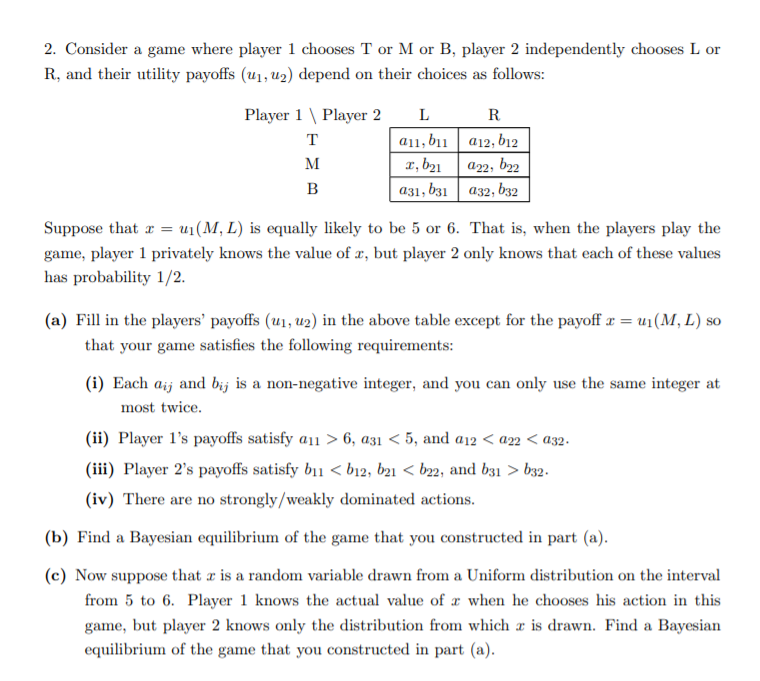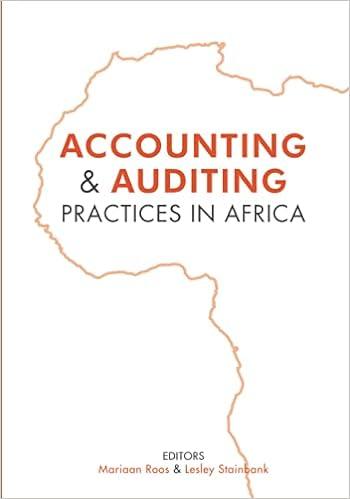It's really urgent! I think the numbers can be chosen whatever as long as it satisfies the given criteria. HELP PLEASE!!!

2. Consider a game where player 1 chooses T or M or B, player 2 independently chooses L or R, and their utility payoffs (U1, U2) depend on their choices as follows: L R 911,611 212, b12 Player 1 | Player 2 M B 2,621 222, 622 231, 631 432,632 Suppose that x = U(M, L) is equally likely to be 5 or 6. That is, when the players play the game, player 1 privately knows the value of x, but player 2 only knows that each of these values has probability 1/2. (a) Fill in the players' payoffs (U1, u2) in the above table except for the payoff x = u(M, L) so that your game satisfies the following requirements: (i) Each dij and bij is a non-negative integer, and you can only use the same integer at most twice. (ii) Player l's payoffs satisfy ani > 6, a31 b32. (iv) There are no strongly/weakly dominated actions. (b) Find a Bayesian equilibrium of the game that you constructed in part (a). (c) Now suppose that r is a random variable drawn from a Uniform distribution on the interval from 5 to 6. Player 1 knows the actual value of x when he chooses his action in this game, but player 2 knows only the distribution from which x is drawn. Find a Bayesian equilibrium of the game that you constructed in part (a). 2. Consider a game where player 1 chooses T or M or B, player 2 independently chooses L or R, and their utility payoffs (U1, U2) depend on their choices as follows: L R 911,611 212, b12 Player 1 | Player 2 M B 2,621 222, 622 231, 631 432,632 Suppose that x = U(M, L) is equally likely to be 5 or 6. That is, when the players play the game, player 1 privately knows the value of x, but player 2 only knows that each of these values has probability 1/2. (a) Fill in the players' payoffs (U1, u2) in the above table except for the payoff x = u(M, L) so that your game satisfies the following requirements: (i) Each dij and bij is a non-negative integer, and you can only use the same integer at most twice. (ii) Player l's payoffs satisfy ani > 6, a31 b32. (iv) There are no strongly/weakly dominated actions. (b) Find a Bayesian equilibrium of the game that you constructed in part (a). (c) Now suppose that r is a random variable drawn from a Uniform distribution on the interval from 5 to 6. Player 1 knows the actual value of x when he chooses his action in this game, but player 2 knows only the distribution from which x is drawn. Find a Bayesian equilibrium of the game that you constructed in part (a)







